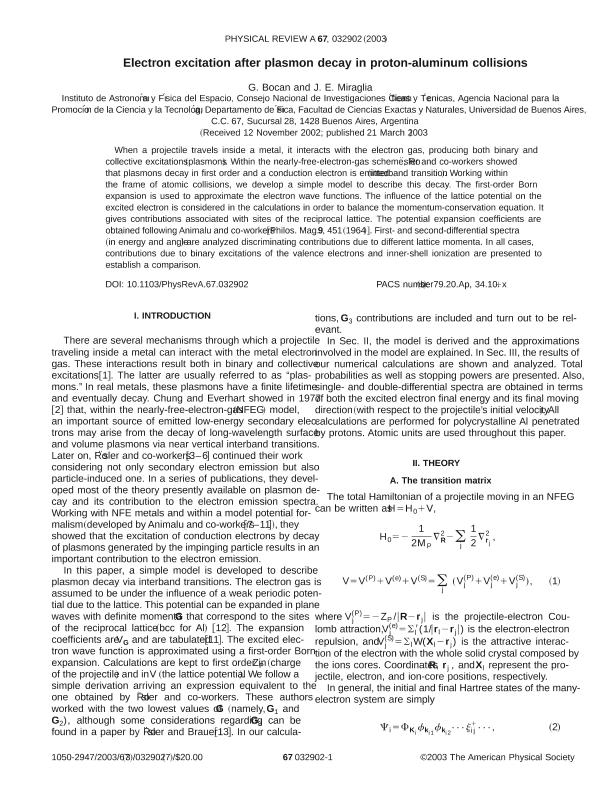Artículo
Electron excitation after plasmon decay in proton-aluminum collisions
Fecha de publicación:
12/2003
Editorial:
American Physical Society
Revista:
Physical Review A: Atomic, Molecular and Optical Physics
ISSN:
1050-2947
Idioma:
Inglés
Tipo de recurso:
Artículo publicado
Clasificación temática:
Resumen
When a projectile travels inside a metal, it interacts with the electron gas, producing both binary and collective excitations ~plasmons!. Within the nearly-free-electron-gas scheme, Ro¨sler and co-workers showed that plasmons decay in first order and a conduction electron is emitted ~interband transition!. Working within the frame of atomic collisions, we develop a simple model to describe this decay. The first-order Born expansion is used to approximate the electron wave functions. The influence of the lattice potential on the excited electron is considered in the calculations in order to balance the momentum-conservation equation. It gives contributions associated with sites of the reciprocal lattice. The potential expansion coefficients are obtained following Animalu and co-workers @Philos. Mag. 9, 451 ~1964!#. First- and second-differential spectra ~in energy and angle! are analyzed discriminating contributions due to different lattice momenta. In all cases,
contributions due to binary excitations of the valence electrons and inner-shell ionization are presented to establish a comparison.
Palabras clave:
Plasmon
,
Decay
,
Interband
,
Collisions
Archivos asociados
Licencia
Identificadores
Colecciones
Articulos(CCT - PATAGONIA NORTE)
Articulos de CTRO.CIENTIFICO TECNOL.CONICET - PATAGONIA NORTE
Articulos de CTRO.CIENTIFICO TECNOL.CONICET - PATAGONIA NORTE
Articulos(IAFE)
Articulos de INST.DE ASTRONOMIA Y FISICA DEL ESPACIO(I)
Articulos de INST.DE ASTRONOMIA Y FISICA DEL ESPACIO(I)
Citación
Bocan, Gisela Anahí; Miraglia, Jorge Esteban; Electron excitation after plasmon decay in proton-aluminum collisions; American Physical Society; Physical Review A: Atomic, Molecular and Optical Physics; 67; 3; 12-2003; 1-7; 032902
Compartir
Altmétricas




